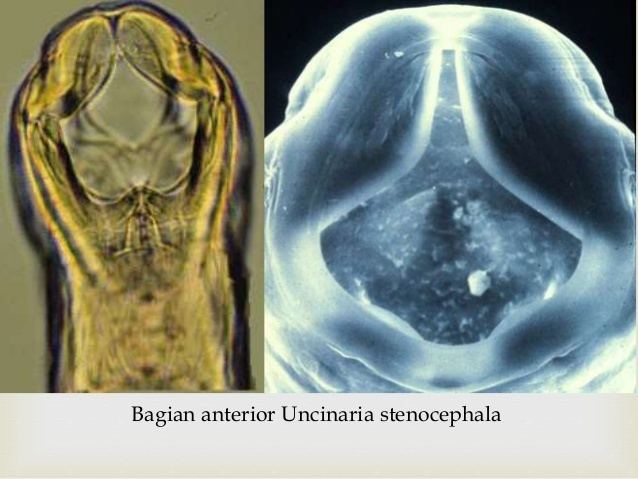Subclass Strongylida Scientific name Uncinaria stenocephala Rank Species | Phylum Nematoda Order Rhabditia Genus Uncinaria Higher classification Uncinaria | |
 | ||
Similar Ancylostoma caninum, Toxascaris leonina, Toxascaris, Trichuris vulpis, Roundworms | ||
Channel 37 degrees news uncinaria stenocephala
Uncinaria stenocephala is a nematode that parasitizes dogs, cats, and foxes as well as humans. It is rare to find in cats in the United States. The common name is the northern hookworm of dogs.
Contents
- Channel 37 degrees news uncinaria stenocephala
- Par sitos uncinaria stenocephala
- Life cycle
- Diagnosis
- Treatment
- References
Par sitos uncinaria stenocephala
Life cycle
The host ingests an infective third stage larva. The larva matures to the adult in the small intestine. Eggs are laid in the small intestine and pass out with the feces. The prepatent period is about 15 to 17 days. The eggs hatch in the soil and the larvae molt twice to reach the infective third-stage.
Adult worms may live for 4 to 24 months in the small intestine. Dog and cat hookworms range in size from 10 to 20 mm by 0.4 to 0.5 mm and the eggs are 71 to 93 μm by 35 to 58 µm.
Adult parasites are most often found in their hosts' small intestine.
Diagnosis
Diagnostic Stage:
Common Diagnostic Test
Clinical Signs:
Treatment
Febantel, Febantel/Pyrantel embonate, Fenbendazole, Ivermectin, Mebendazole, Pyrantel Pamoate
